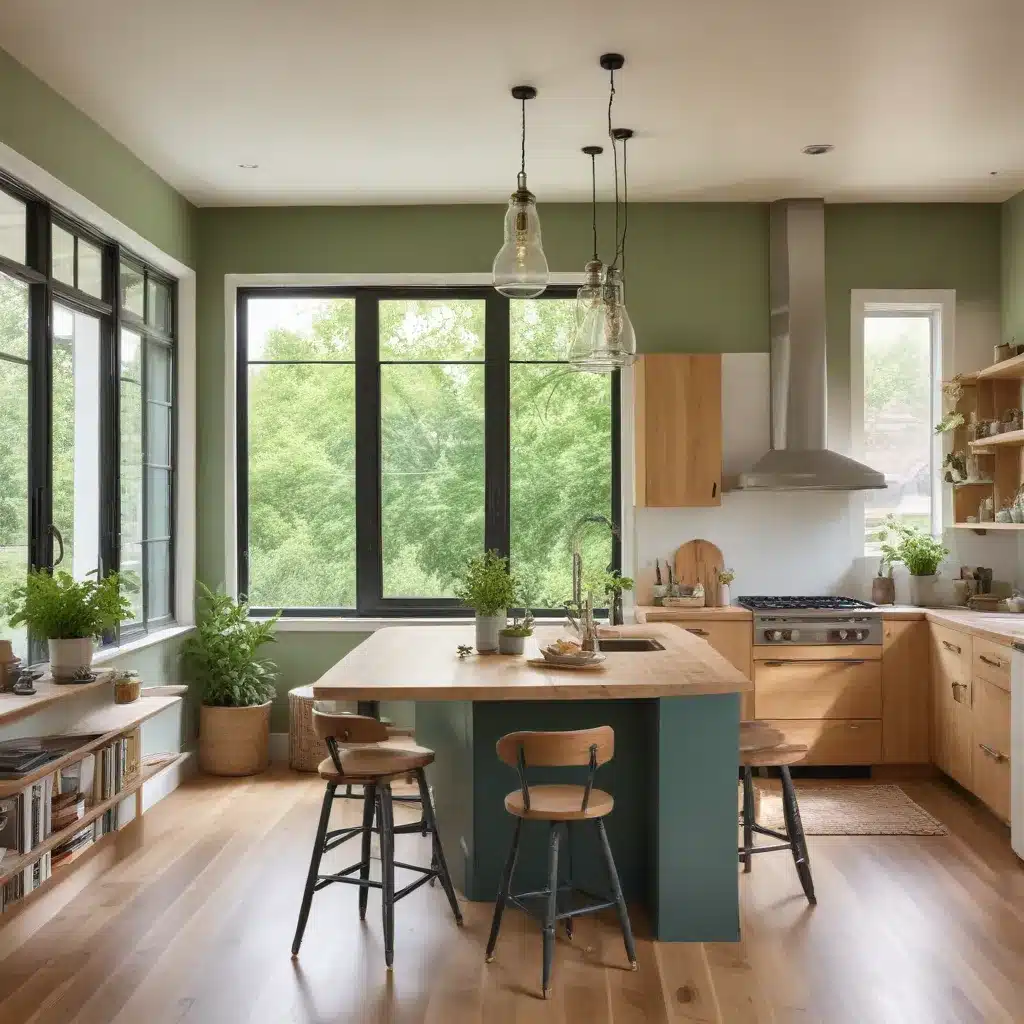
Sustainable Swaps: Green Alternatives for Every Renovation
As an experienced home improvement consultant, I’ve seen firsthand how renovations can take a toll on the environment. The good news is that there are now more eco-friendly options than ever before to help reduce your carbon footprint without sacrificing style or functionality. Whether you’re tackling a full-scale remodel or just sprucing up a few rooms, these sustainable swaps will ensure your home renovation is as green as it is gorgeous.
Energy-Efficient Appliances
One of the easiest and most impactful ways to make your home more sustainable is by upgrading to ENERGY STAR-certified appliances. These devices use 10-50% less energy than traditional models, which will cut down on your monthly utility bills and shrink your environmental impact.
Start in the kitchen by replacing your old fridge with an ENERGY STAR-certified refrigerator. Look for models with advanced insulation, efficient compressors, and minimized air leaks. You can also upgrade to a high-efficiency ENERGY STAR washing machine that uses up to 25% less water and 33% less energy compared to conventional washers.
Beyond large appliances, don’t forget about smaller upgrades like smart thermostats. These nifty devices learn your heating and cooling habits, automatically adjusting temperatures to maximize efficiency. Many smart thermostats even offer remote access, so you can make adjustments from your smartphone no matter where you are.
Eco-Friendly Flooring
Flooring is one of the biggest material investments in any renovation, so it’s important to choose options that are both durable and sustainable. Bamboo hardwood is a fantastic alternative to traditional wood floors. Bamboo is a rapidly renewable grass that grows up to 4 feet per day, making it a highly eco-friendly choice. It’s also incredibly tough and scratch-resistant.
Another great green flooring option is cork. This natural material is harvested from the bark of cork oak trees without cutting them down. Cork flooring has excellent insulation properties, is naturally anti-microbial, and can last for decades with proper care.
If you love the look of rustic, wide-plank hardwood, consider going with reclaimed wood. Salvaging lumber from old barns, homes, and industrial buildings keeps usable materials out of landfills. Reclaimed wood has tons of character and history, plus a much lighter environmental impact than new wood.
Sustainable Countertops
Countertops are another high-impact area when it comes to renovation materials. Quartz countertops are an excellent eco-friendly choice, as they’re made from a durable blend of ground quartz and resin. Many quartz manufacturers also incorporate recycled materials into their products.
For an even greener option, look for recycled glass surfaces. These countertops are created by melting and fusing post-consumer glass, resulting in a stunning, one-of-a-kind look. Recycled glass countertops are non-porous, stain-resistant, and require minimal maintenance.
Soapstone is another sustainable countertop material worth considering. This natural stone is quarried right from the earth and has a beautiful, mottled appearance that only improves with age. Soapstone is extremely dense and durable, making it a long-lasting choice for kitchen or bathroom renovations.
Green Insulation Options
Proper insulation is crucial for maximizing a home’s energy efficiency, but traditional fiberglass batts come with their own environmental concerns. For a greener solution, consider cellulose insulation. Made from recycled newspaper and other plant-based materials, cellulose insulation provides excellent thermal and acoustic properties while being non-toxic and biodegradable.
Wool insulation is another sustainable option that’s gaining popularity. Wool is a natural, renewable resource that’s inherently fire-resistant and mold-resistant. It also has impressive sound-dampening abilities to keep your home quieter. Wool insulation can be used in walls, attics, and crawl spaces for whole-house comfort.
Spray foam insulation is a high-performance option that effectively seals air leaks and creates a continuous thermal barrier. While traditional spray foams contained harsh chemical propellants, many manufacturers now offer low-VOC (volatile organic compound) formulas that are safer for both the environment and your indoor air quality.
Renewable Building Materials
When it comes to cabinetry, flooring, and other structural elements, look for bamboo as a renewable alternative to hardwood. Bamboo grows incredibly fast, making it a highly sustainable resource. It’s also just as durable as traditional wood, with a beautiful, unique grain pattern.
For an even more eco-friendly option, consider recycled plastic decking. These composite boards are made from reclaimed plastics like grocery bags and bottle caps, keeping waste out of landfills. Recycled plastic decking is low-maintenance, weather-resistant, and available in a variety of natural-looking colors and patterns.
Another innovative building material is hempcrete, a bio-composite made from the woody core of the hemp plant and lime. Hempcrete is completely biodegradable, fire-resistant, and provides excellent insulation properties. It can be used to create load-bearing walls, non-structural walls, and even flooring.
Low-Impact Lighting
Lighting is often overlooked in the sustainability conversation, but it plays a big role in a home’s overall energy consumption. LED light bulbs are the clear winner when it comes to energy efficiency, using up to 80% less energy than traditional incandescent bulbs. LEDs also last 25-35 times longer, significantly reducing replacement costs and waste.
For outdoor lighting, solar-powered fixtures are a fantastic renewable option. These lamps and path lights use built-in photovoltaic cells to convert sunlight into electricity, eliminating the need for wiring or electrical hookups. Solar outdoor lighting is perfect for illuminating gardens, walkways, and other landscape features.
In addition to efficient bulbs and fixtures, daylighting is a smart way to reduce your reliance on artificial lighting. Strategically placed windows, skylights, and sun tunnels can bring natural light deep into your home’s interior, cutting down on electricity use. Daylighting also has proven benefits for mood, productivity, and overall well-being.
Renovating with sustainability in mind doesn’t have to be complicated or costly. By making simple swaps like ENERGY STAR appliances, renewable building materials, and low-impact lighting, you can transform your home into an eco-friendly oasis without sacrificing style or function. For more green inspiration, be sure to check out Reluctant Renovator – your one-stop-shop for budget-friendly, family-friendly, and environmentally friendly home improvement projects.



